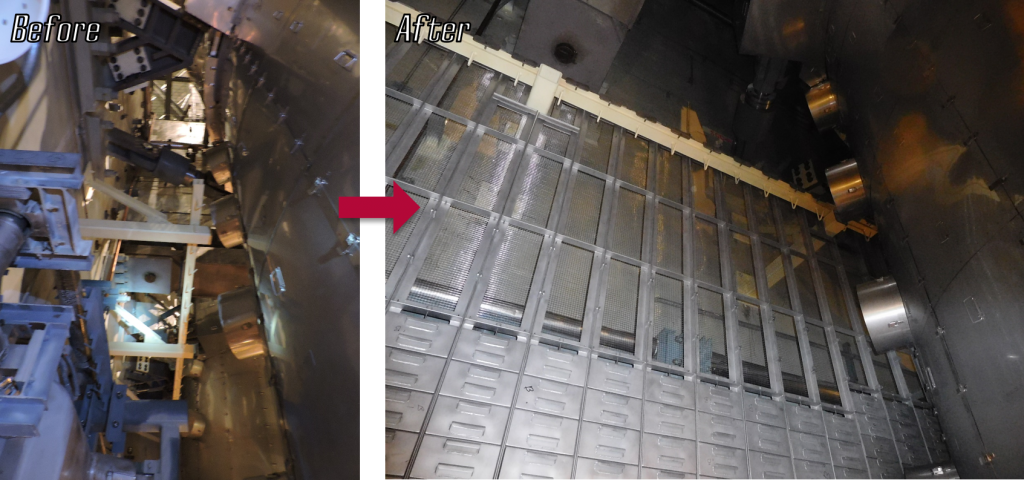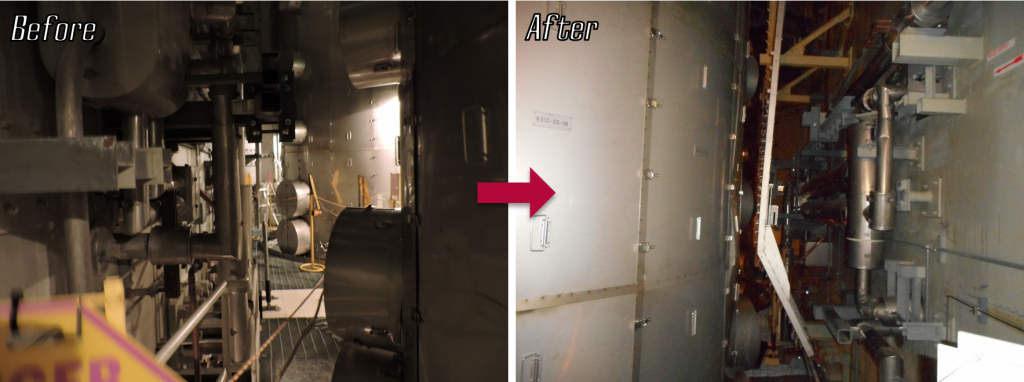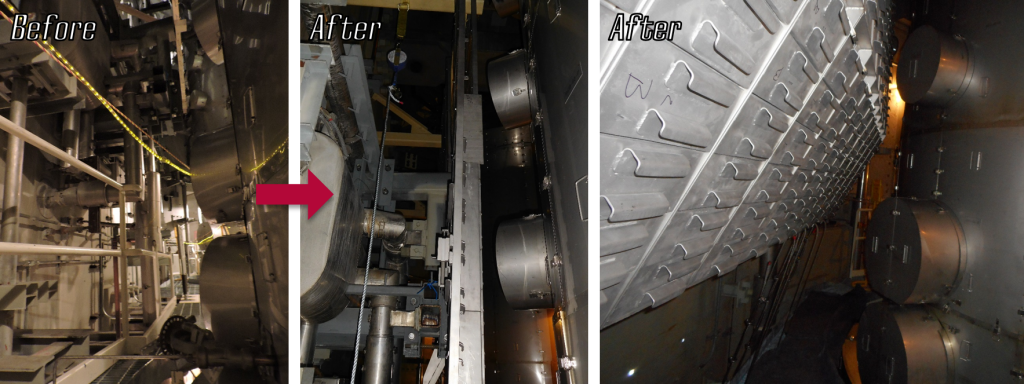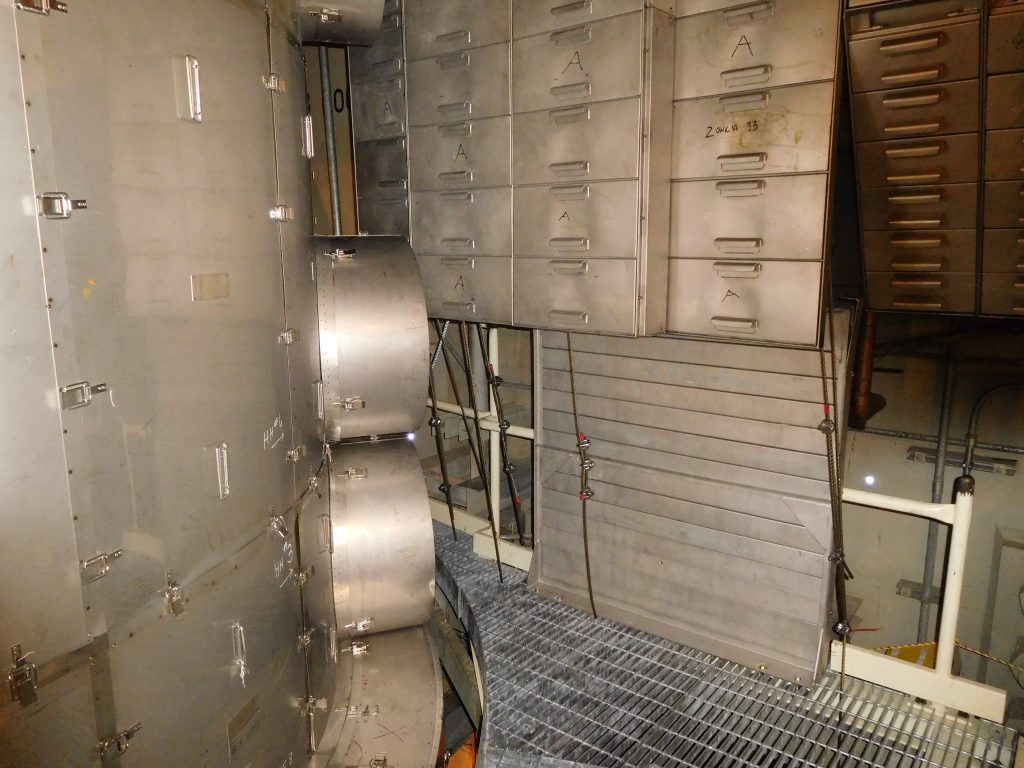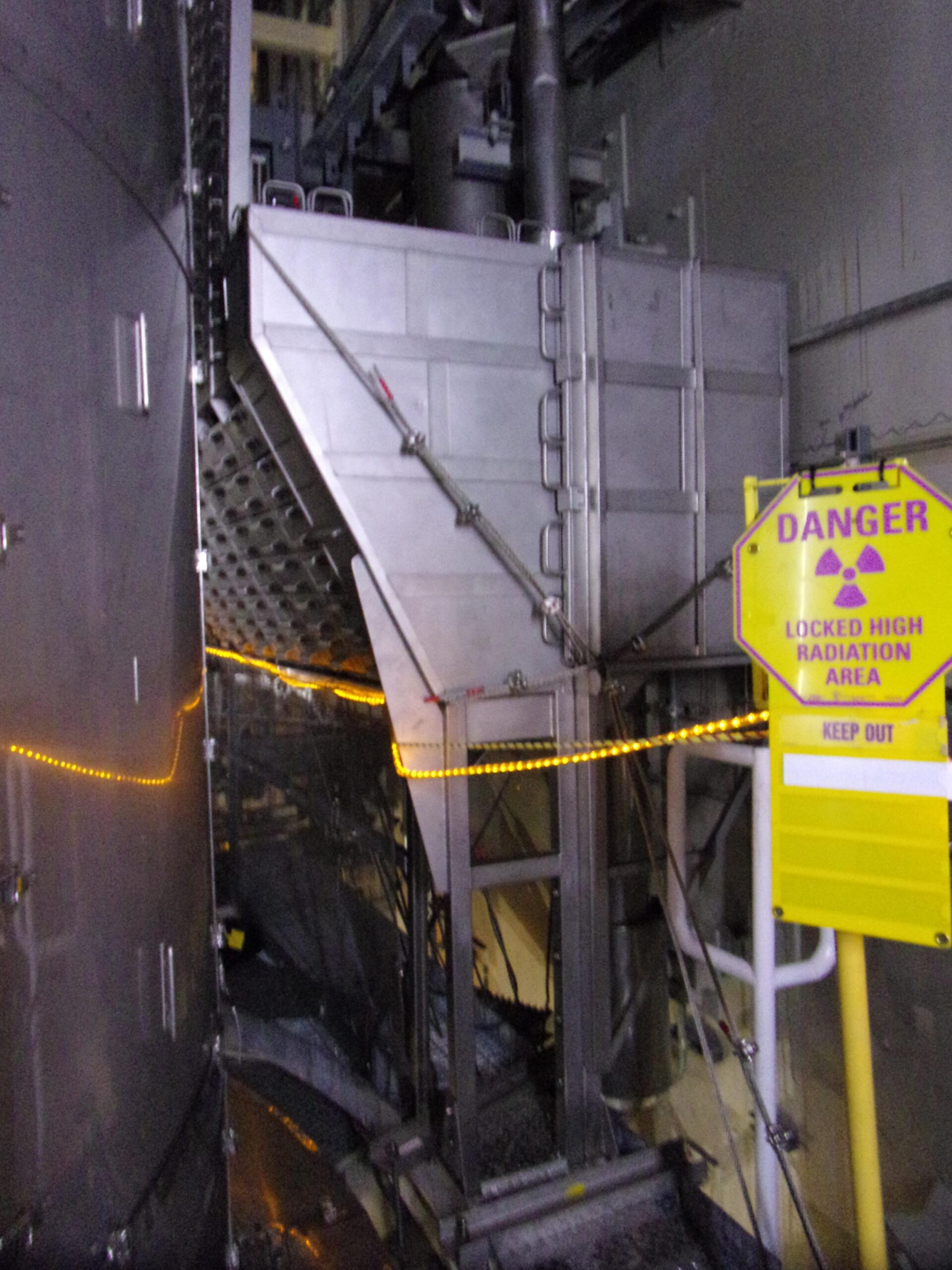Blog
Heat Exchanger Shielding – Permanent Installation
March 29, 2021
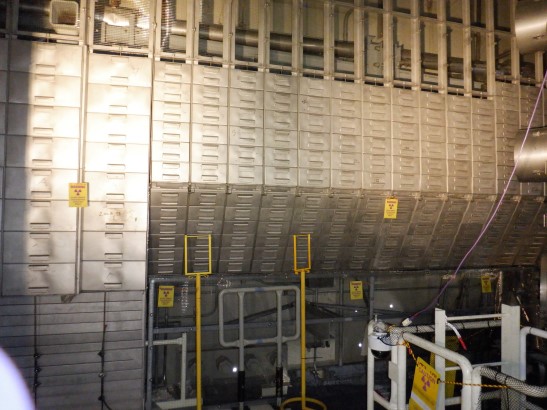
As part of a long-term dose reduction plan, Ameren Callaway sought to install permanent shielding around one of their regen heat exchangers. The intention was to replace the dozens of lead wool blankets used as temporary shielding, and more importantly, eliminate the time and dose costs associated with installing and uninstalling the temporary shielding package. Working together with plant engineers, contractors, and the ALARA group, NPO designed a new, permanent shielding package, but not before overcoming several obstacles that included:
- Limited space – Between the limited floor space, steam generators, their insulation, and pipe interferences, there was not a lot of room left for shielding.
- Use existing structure – The beam used to hang the lead wool blankets was the only reliable and available way to hang the new permanent shielding. NPO had to work with the limitations of that beam’s size and capacity.
- No crane access – Above the heat exchange was a mezzanine and a host of other interferences that would make it impossible to lower large sections of shielding into place.
- Everything must be modular – Because the only access to the area would be on foot, each piece of shielding would have to be light enough and small enough to be installed entirely be hand.
Taking these hurdles into consideration and through constant collaboration with Callaway, we engineered a modular shielding system consisting of a few hundred lead panels encased in stainless steel and framework attaching to the existing beam. Once the design was honed in, our Professional Engineer performed a seismic analysis for the entire system. With this information we could maximize the amount of shielding throughout the area within the limits of the beam’s capacity. In addition, an MCNP analysis was performed to validate the effectiveness of the shielding. A better than 90% dose reduction was expected.
Overall, the system consisted of the following:
- 206 lead-filled shield panels that lock into position on 17 frames.
- All panels and frames were linked and locked together with bolt connections to form a solid shield wall.
- Additional shield wall on the mezzanine.
- Frames locked together via bolt connections to create a solid, continuous wall of shielding.
During the Oct-2020 outage, installation went quickly despite the number of individual pieces, as quickly as the temporary shielding package. The pin connections were also pinch-point safe. The ALARA department reported a 90% dose reduction, as predicted by NPO’s MNCP analysis. Now, Callaway has permanently installed, great looking, maximally effective shielding for their Heat Exchanger.
